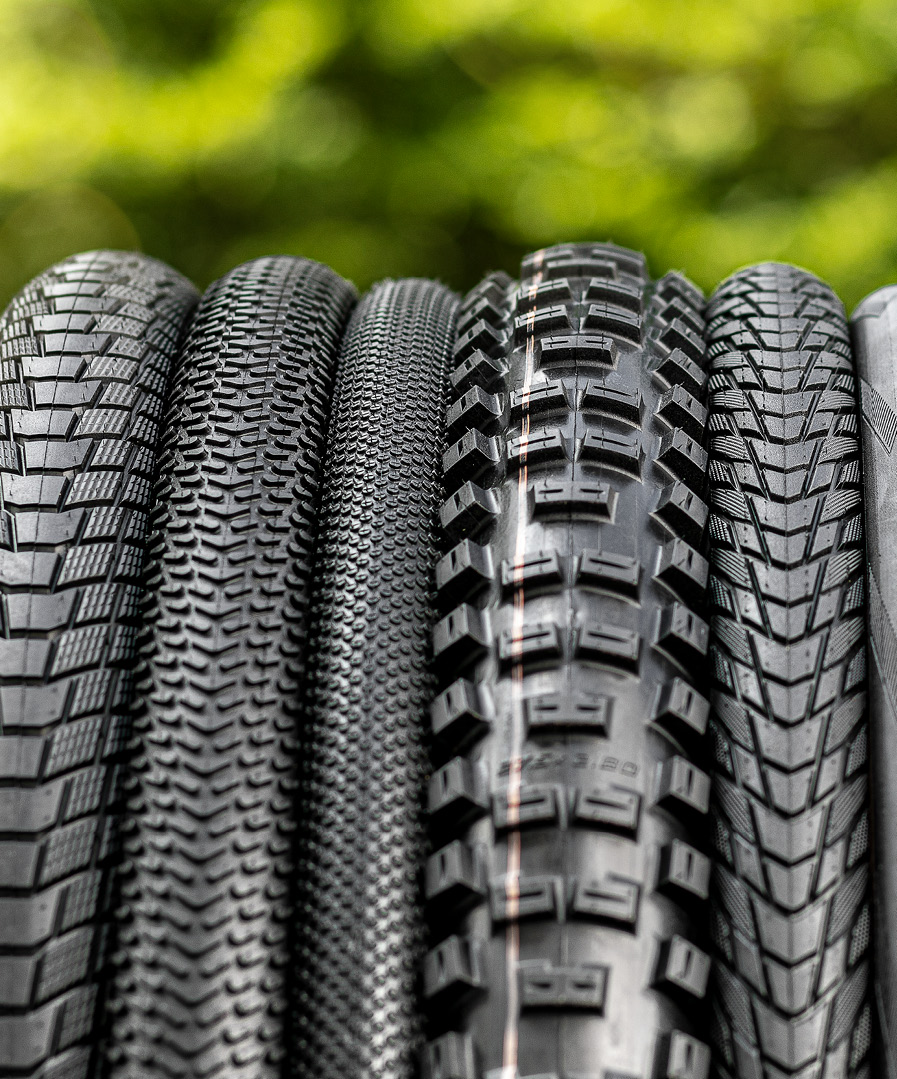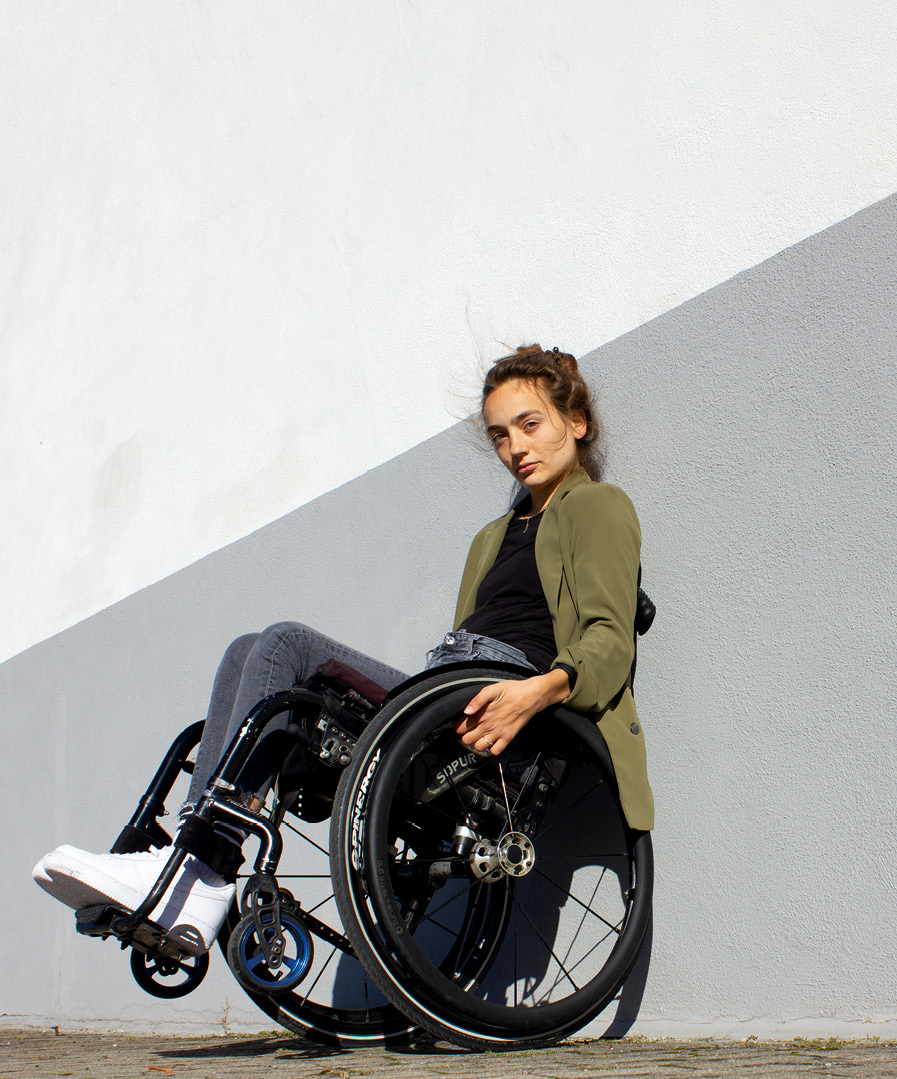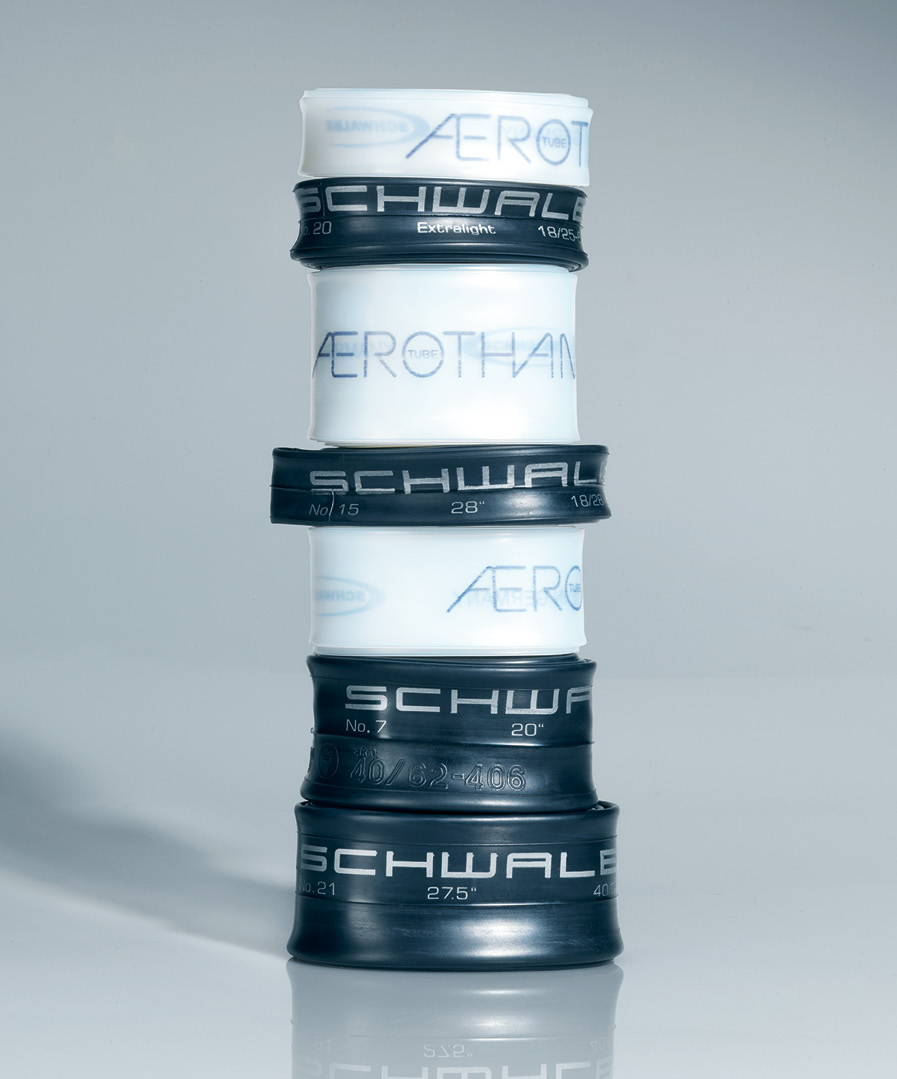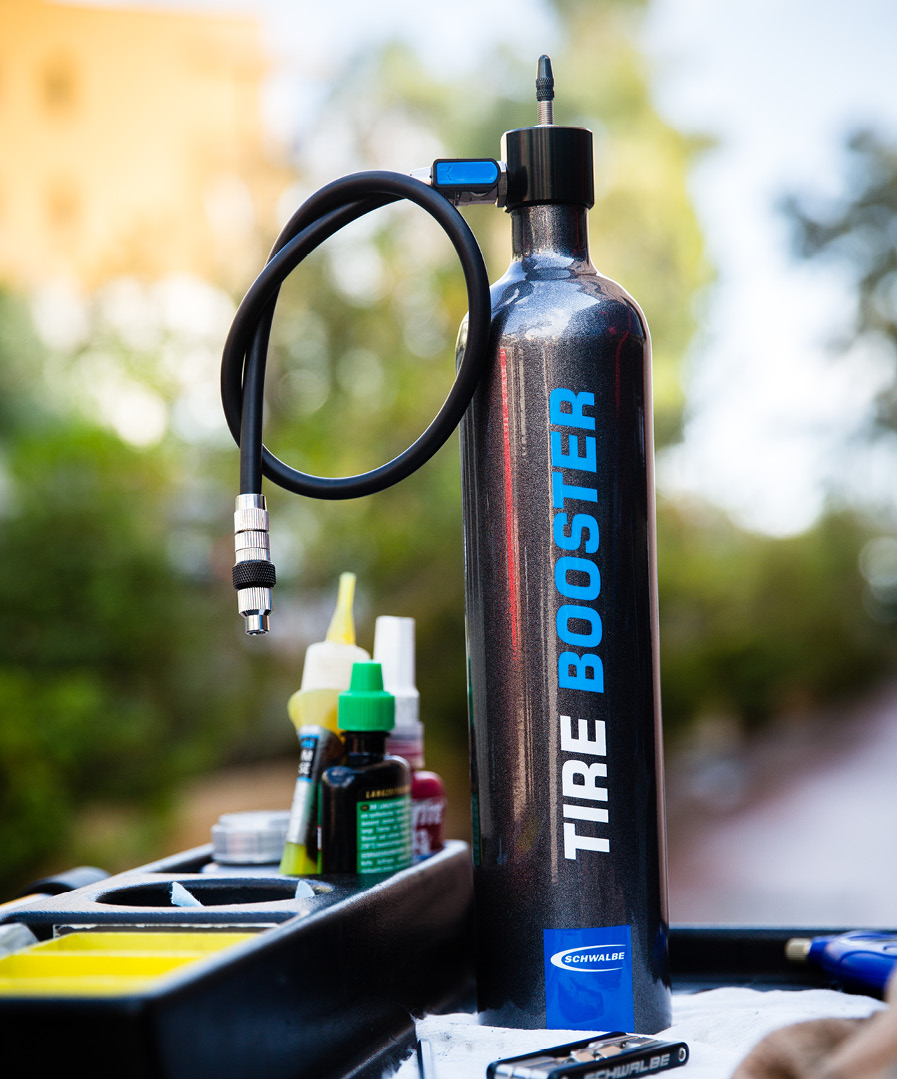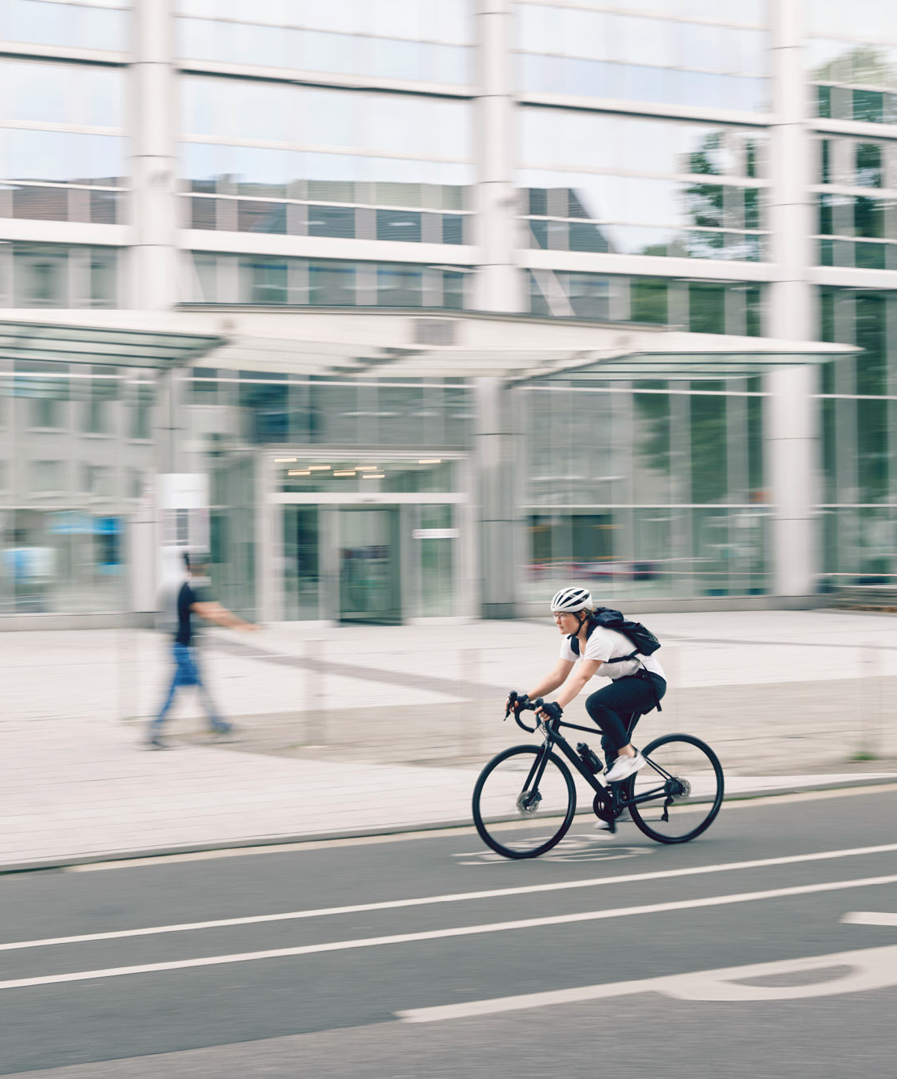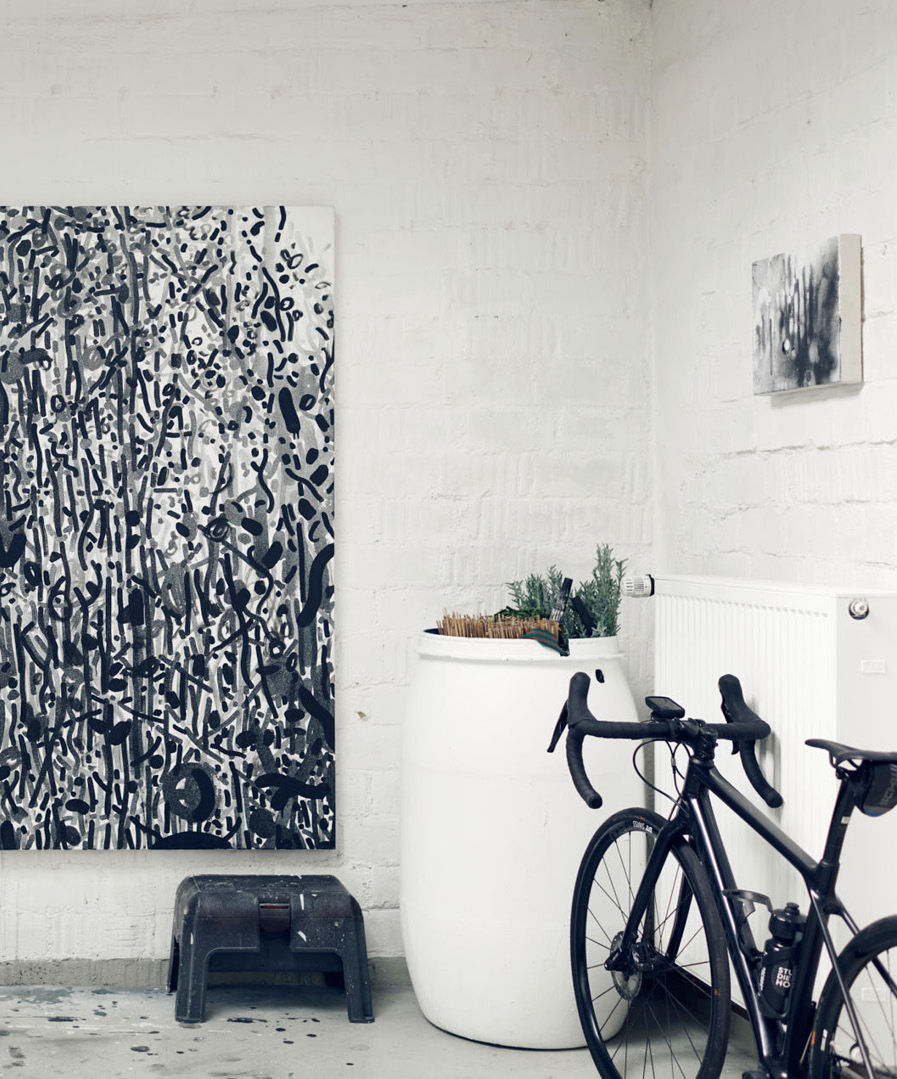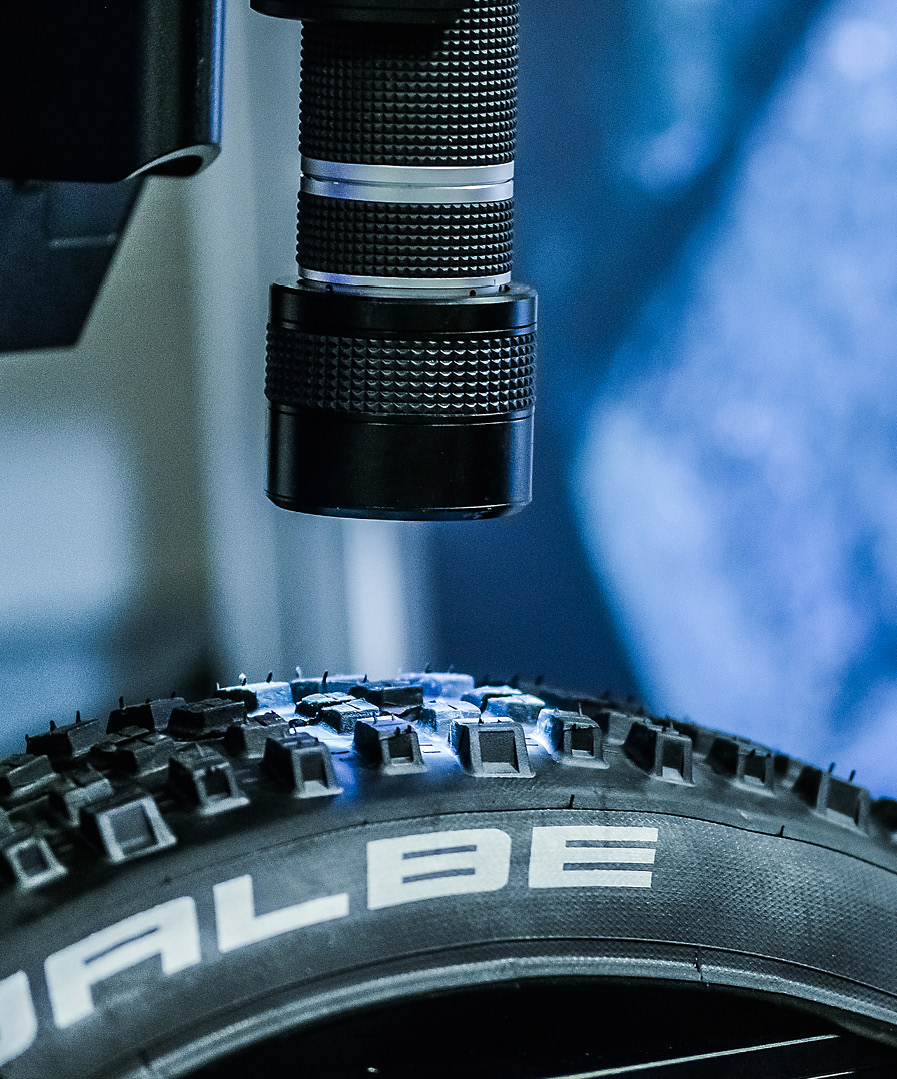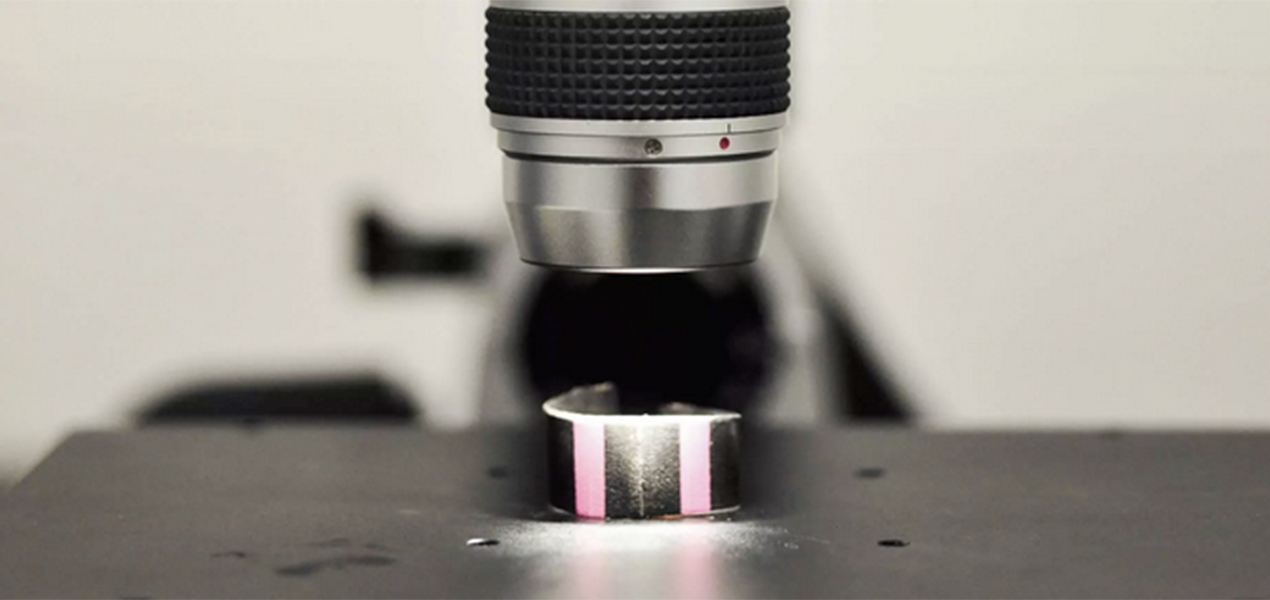IS THERE A CONNECTION BETWEEN TIRES AND A WOBBLE?
The unpleasant wobble, also referred to as shimmy effect, usually occurs, when the natural frequencies of different bicycle components (such as frame, fork, tires…) overlap and mutually reinforce each other. In most cases it only occurs in a certain speed range.
We are facing that phenomenon in most cases when it occurs after a tire change for the first time. Nevertheless, it is not the tire which can be made responsible for this problem. It is simply an unfavorable interaction of different components. The same tire used on many other bicycles will not cause any problems.
By tendency, the problem occurs more frequently, the larger the volume and the heavier the tires. The same applies to an unfavorable distribution of the baggage and a less stiff bicycle frame. But there is no bicycle which is really immune to that. We have even experienced this phenomenon with extremely stiff bicycle frames.
To remedy the problem, you have to actually “upset” the entire system. It is absolutely possible that the shimmy effect can be remedied by choosing another tire model or already by modifying the inflation pressure only. Replacing the frame or the fork would probably also help, but replacing these parts is not so easy.
WHY DO SOME TIRES LEAVE DISCOLORATIONS ON PLASTIC FLOOR COVERINGS?
Some rubber compounds have a strong predisposition to discolor their surrounding area. A long-term, persistent contact with other rubber or plastic materials will make certain color components migrate into the contact material.
If a bicycle is left standing for example for a long period of time on a plastic or painted wooden floor, it may happen that permanent discolorations will occur in the contact area of the tire. A prolonged contact (e.g. when in stock or during transport) with multi-colored tires, plastic materials or painted surfaces can be problematic, as well.
Especially high-performance rubber compounds are often such „staining“ compounds. You can actually formulate rubber compounds in a way that this staining effect does not occur. And this is in fact the case with most Schwalbe rubber compounds. But if we want to achieve the very best properties with regard to rolling resistance and grip, this staining effect as a side effect unfortunately cannot be avoided completely.
For exactly this reason you very often see high-end tires with a discolored logo in the tire label. A discolored logo especially on an expensive tire is not really nice, of course, but at the same time it demonstrates that this tire was uncompromisingly optimized for performance.
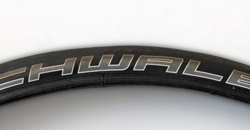
DOES IT MAKE ANY SENSE TO DEFLATE TIRES FOR TRANSPORT BY AIR?
This regulation is unfortunately required insistently at many airports. From our point of view it makes little sense.
Pressure compensation in the cargo hold of a passenger plane is standard today. But even in case of a transport in a space without pressure compensation, the change of the inflation pressure at a height of 10000 m / 32800 feet would be minimal compared to the pressures a tire must withstand in any case. In a completely air-evacuated space, the pressure would be exactly 1 bar higher than under normal atmospheric conditions.
On the other hand, the risk of damage is much greater for tubes or rims when transporting the bicycle with flat tires. For this reason we recommend that you keep the tires inflated during transport by plane. We are, however, also aware of the fact that even convincing arguments will be of little help against the regulations of an airport company.


